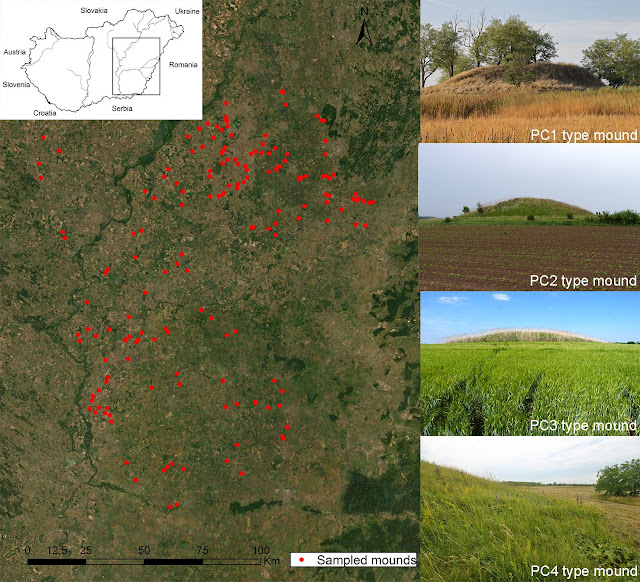The members of the FireLink Cost Action compiled a synthesis paper, where we give an overview of the current wildland fire patterns across Europe and highlight the most important overarching challenges. The authors from 31 countries also provide national perspectives, where we report on the trends, major research direrections and the hottest issues in their respective home countries. From Hungary, four researchers from the Centre for Ecological Research participated: Miklós Kertész, Orsolya Valkó, Balázs Deák and Réka Aszalós.
The paper is open acceses and can be freely downloaded from the homepage of the Air, Soil and Water Research journal.
Abstract
Changes
in climate, land use, and land management impact the occurrence and
severity of wildland fires in many parts of the world. This is
particularly evident in Europe, where ongoing changes in land use have
strongly modified fire patterns over the last decades. Although
satellite data by the European Forest Fire Information System provide
large-scale wildland fire statistics across European countries, there is
still a crucial need to collect and summarize in-depth local analysis
and understanding of the wildland fire condition and associated
challenges across Europe. This article aims to provide a general
overview of the current wildland fire patterns and challenges as
perceived by national representatives, supplemented by national fire
statistics (2009–2018) across Europe. For each of the 31 countries
included, we present a perspective authored by scientists or
practitioners from each respective country, representing a wide range of
disciplines and cultural backgrounds. The authors were selected from
members of the COST Action “Fire and the Earth System: Science &
Society” funded by the European Commission with the aim to share
knowledge and improve communication about wildland fire. Where relevant,
a brief overview of key studies, particular wildland fire challenges a
country is facing, and an overview of notable recent fire events are
also presented. Key perceived challenges included (1) the lack of
consistent and detailed records for wildland fire events, within and
across countries, (2) an increase in wildland fires that pose a risk to
properties and human life due to high population densities and sprawl
into forested regions, and (3) the view that, irrespective of changes in
management, climate change is likely to increase the frequency and
impact of wildland fires in the coming decades. Addressing challenge (1)
will not only be valuable in advancing national and pan-European
wildland fire management strategies, but also in evaluating perceptions
(2) and (3) against more robust quantitative evidence.
The citation of the paper:
Fernandez-Anez, N., Krasovskiy, A., Müller, M., Vacik, H.,
Baetens, J., Hukić, E., Kapovic Solomun, M., Atanassova, I., Glushkova, M.,
Bogunović, I., Fajković, H., Djuma, H., Boustras, G., Adámek, M., Devetter, M.,
Hrabalikova, M., Huska, D., Martínez Barroso, P., Vaverková. M.D., Zum, D.,
Jõgiste, K., Metslaid, M., Koster, K., Köster. E., Pumpanen, J.,
Ribeiro-Kumara, C., Di Prima, S., Pastor, A., Rumpel, C., Seeger, M.,
Daliakopoulos,, I., Daskalakou, E., Koutroulis, A., Papadopoulou, Maria P.,
Stampoulidis, K., Xanthopoulos, G., Aszalós, R., Deák, B., Kertész, M., Valkó,
O., Finger, D.C., Thorsteinsson, T., TilL, J., Bajocco, S., Gelsomino, A., Minervino
Amodio, A., Novara, A., Salvati, L., Telesca, L., Ursino, N., Jansons, A.,
Kitenberga, M., Stivrins, N., Brazaitis, G., Marozas, V., Cojocaru, O.,
Gumeniuc, I., Sfecla, V., Imeson, A., Veraverbeke, S., Fjellgaard Mikalsen, R.,
Koda, E., Osinski, P., Meira Castro, A.C., Nunes, J.P., Oom, D., Vieira, D.,
Rusu, T., Bojović, S., Djordjevic, D., Popovic, Z., Protic, M., Sakan, S.,
Glasa, J., Kacikova, D., Lichner, L., Majlingova, A., Vido, J., Ferk, M.,
Tičar, J., Zorn, M., Zupanc, V., Hinojosa, M.B., Knicker, H., Lucas-Borja,
M.E., Pausas, J., Prat-Guitart, N., Ubeda, X., Vilar, L., Destouni, G.,
Ghajarnia, N., Kalantari, Z., Seifollahi-Aghmiuni, S., Dindaroglu, T.,
Yakupoglu, T., Smith, T., Doerr, S., Cerda, A. (2021): Current wildland fire
patterns and challenges in Europe: A synthesis of national perspectives. Air,
Soil and Water Research 14: 1-19. doi: 10.1177/11786221211028185





























